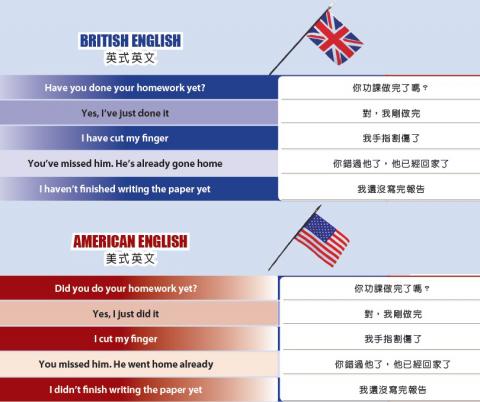One of the functions of the present perfect tense (“I have done”) is to say that something which happened in the past, and is now complete, has significance that stretches to the present. One simple example of this is the sentence “I have eaten a lot of food.” Here, the eating part has finished, but the point of the sentence is that the speaker is no longer hungry, or is feeling a little uncomfortable, or is worried about putting on weight, or is no longer able to eat a large meal, or is saying that they really enjoyed the meal. Note that the specific nature of the significance to the present is not explicitly stated. To simply communicate the fact of having eaten, the speaker could just say “I ate a lot of food,” using the past simple tense (“I did”).
Grammatically speaking, this also means that, when using the present perfect — when the result, and not the action itself, is the important thing — we should not use a specific time reference such as “yesterday” or “an hour ago.” Again, this is where the simple past is used: “I ate a lot of food yesterday.”
The above apply to both American and British English. However, the present perfect is used much more regularly in British English; the use of the simple past is commonly used to communicate this function of the present perfect in American English.

That is, an exchange in British English might go:
“Have you registered to vote yet?”
“Yes, I registered last week.”
In American English, the same exchange might be:
“Did you register to vote yet?”
“Yes, I registered last week.”
(Paul Cooper, Taipei Times)
現在完成式(例如「I have done」,我已經完成)的功能之一,是表示過去發生的事,現在已經完成,有從過去延伸到現在的意涵,例如「I have eaten a lot of food」(我已經吃了很多東西)這個簡單的句子。此處「吃」這個動作已經完成,但這句話的目的是表示說這話的人已經不餓了,或感覺有點不舒服,或擔心體重增加,或沒辦法多吃,或表示這頓飯吃得很開心。請注意,雖然此例句的過去完成式賦予它這些言外之意,但這句話字面上並未明確表達這些意義。若單純只是要表達已經吃過飯這個事實,只要說「I ate a lot of food」(我吃了很多食物)就可以了,所用的是簡單過去式(I did)。
就文法而言,這也表示我們不應把「yesterday」或「an hour ago」等時間參照用在現在完成式,因為現在完成式的重點是結果,而不是動作本身。時間參照是像這樣用在簡單過去式的句子:「I ate a lot of food yesterday」(我昨天吃了很多食物)。
以上的描述對美式和英式英文皆適用,但英式英文更常用現在完成式。在美式英文中,通常是以簡單過去式來表達現在完成式的這個功能。
這也就是說,一段對話在英式英文中大概會是這樣:
「Have you registered to vote yet?」(你登記投票了嗎?)
「Yes, I registered last week.」(對,我上週登記了。)
相同的對話用美式英文,可能會是這麼說的:
「Did you register to vote yet?」(你登記投票了嗎?)
「Yes, I registered last week.」(對,我上週登記了。)
(台北時報林俐凱譯)

In an effort to fight phone scams, British mobile phone company O2 has introduced Daisy, an AI designed to engage phone con artists in time-wasting conversations. Daisy is portrayed as a kindly British granny, exploiting scammers’ tendency to target the elderly. Her voice, based on a real grandmother’s for authenticity, adds to her credibility in the role. “O2” has distributed several dedicated phone numbers online to direct scammers to Daisy instead of actual customers. When Daisy receives a call, she translates the scammers’ spoken words into text and then responds to them accordingly through a text-to-speech system. Remarkably, Daisy

Bilingual Story is a fictionalized account. 雙語故事部分內容純屬虛構。 Emma had reviewed 41 resumes that morning. While the ATS screened out 288 unqualified, she screened for AI slop. She could spot it a mile away. She muttered AI buzzwords like curses under her breath. “Team player.” “Results-driven.” “Stakeholder alignment.” “Leveraging core competencies.” Each resume reeked of AI modeling: a cemetery of cliches, tombstones of personality. AI wasn’t just changing hiring. It was draining the humanity from it. Then she found it: a plain PDF cover letter. No template. No design flourishes. The first line read: “I once tried to automate my

Every May 1, Hawaii comes alive with Lei Day, a festival celebrating the rich culture and spirit of the islands. Initiated in 1927 by the poet Don Blanding, Lei Day began as a tribute to the Hawaiian custom of making and wearing leis. The idea was quickly adopted and officially recognized as a holiday in 1929, and leis have since become a symbol of local pride and cultural preservation. In Hawaiian culture, leis are more than decorative garlands made from flowers, shells or feathers. For Hawaiians, giving a lei is as natural as saying “aloha.” It shows love and

1. 他走出門,左右看一下,就過了馬路。 ˇ He walked outside, looked left and right, and crossed the road. χ He walked outside and looked left and right, crossed the road. 註︰並列連接詞 and 在這句中連接三個述語。一般的結構是 x, y, and z。x and y and z 是加強語氣的結構,x and y, z 則不可以。 2. 他們知道自己的弱點以及如何趕上其他競爭者。 ˇ They saw where their weak points lay and how they could catch up with the other competitors. χ They saw where their weak points lay and how to catch up with the other competitors. 註:and 一般連接同等成分,結構相等的單詞、片語或子句。誤句中 and 的前面是子句,後面是不定詞片語,不能用 and 連接,必須把不定詞片語改為子句,and 前後的結構才相等。 3. 她坐上計程車,直接到機場。 ˇ She took a cab, which took her straight to the airport. ˇ She took a cab and it took her straight